Healthy Eating
The 15 Best Keto Recipes For Weight Loss
Published
4 years agoon
By
Staff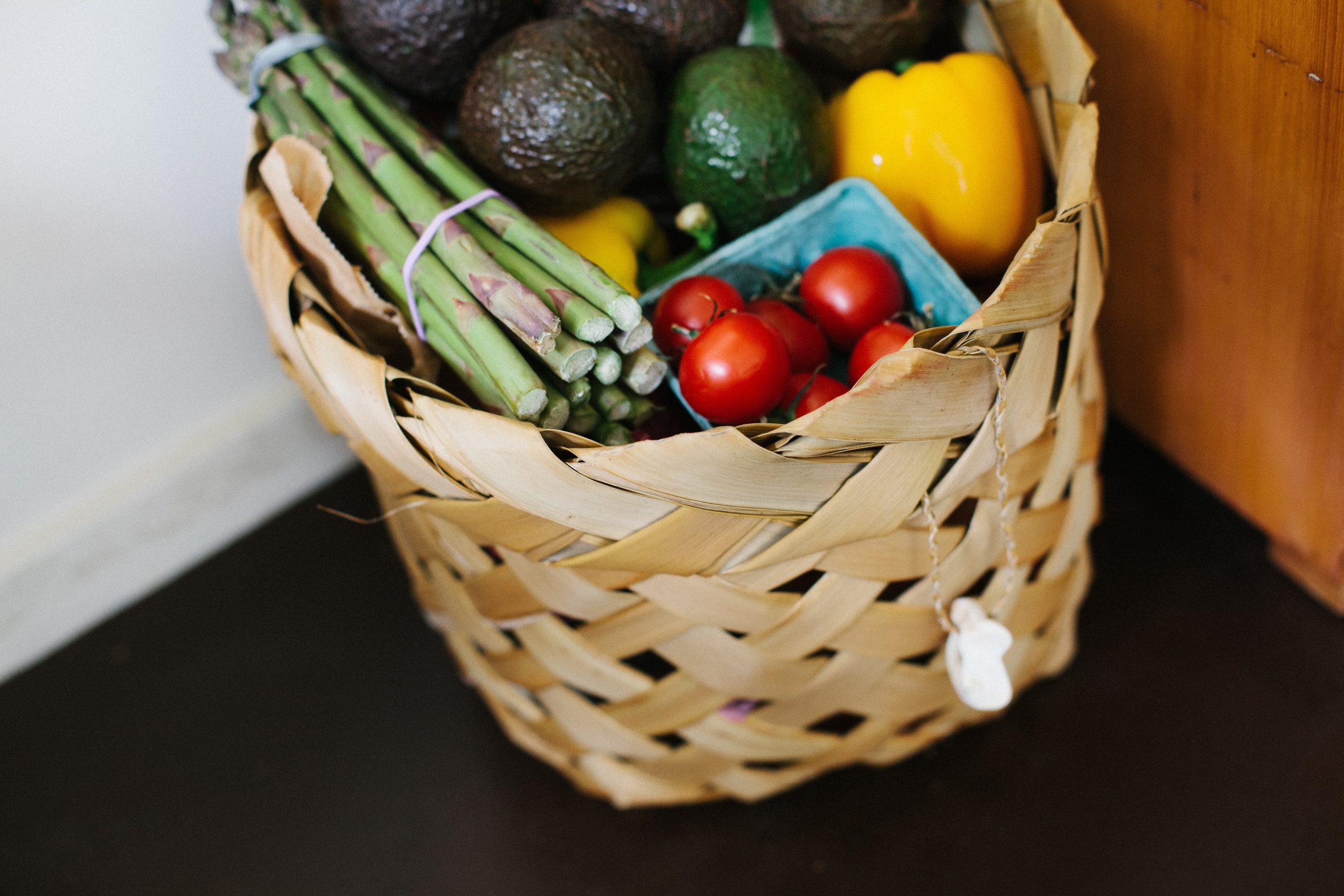
The keto diet is also known as the ketogenic diet and is known as one of the most popular low-carb diets out there. It works by encouraging the liver to create the ketones needed for energy since the body isn’t able to get it as much from carbohydrates.
It also goes by the term low carb high fat (LCHF) diet, because there is a focus on getting more unsaturated fats. Some people find it similar to the paleo diet or even the Atkins diet for its low carb approach.
Does it work for weight loss? People certainly find that it does, while helping them improve their health. In some cases, it can help to reduce the risks and development of type II diabetes because it helps to reduce the amount of insulin your body needs to produce.
This is a complete change in lifestyle. The good news is that you get to find out lots of tasty and easy-to-make recipes. It’s a diet where you’ve probably already got the basics in your cupboards, and you’ll just need to make a few substitutes avoid the high carb foods that you may usually rely on.
While I have 15 excellent keto recipes for weight loss here, I want to share a little more about the keto diet and tips for substitution.
How Do I Follow the Keto Diet?
Being low in carb, the keto diet is needed in your body to produce ketones for energy. This is done by focusing on the right types of foods: those high in fat to keep the ketone production high.
This is because you get rid of the foods that cause high blood sugar, also known as glucose. Glucose is the easiest way for your body to get energy, but it can lead to energy crashes if you get too much in a short time. To get rid of the glucose and use it up, the body needs to produce insulin. As we produce more and more, our bodies become resistant to it, and this can lead to diabetes.
Instead, the body encourages the state of ketosis. This is the process that allows the body to work when the amount of food you get on a daily basis is low. The fat in the liver breaks down to produce the ketones to keep you going.
That doesn’t mean you’ll go hungry on a diet. It’s quite the opposite! You’re not starving yourself of calories but of carbohydrates. Your body won’t go into what’s known as starvation mode, which is where your metabolic rate drops considerably. You’re adding more fat to the diet and taking out the carbs, so the metabolism can still work, and you get the energy you need.
Substitutions to Cut Out the Carbs
So, now you know this, it’s time to look at ways to cut out the carbs. You can still enjoy many of your usual meals, but you just need to find substitutes. These can be very easy and healthy to come by.
At the same time, you need to remember to increase the amount of fat that you eat. Also, it doesn’t mean a complete ban on carbs. You just need to reduce the amount that you eat to 15g or less per day. On average, we tend to eat around a third to a half more than that on a daily basis. Reducing carbs won’t be easy for some, which is why having delicious recipes to try first is the way to go.
Keep in mind that this diet is excellent for your health. You’re reducing the amount of insulin in your system, which means you reduce your risks of type II diabetes. If you already have type II diabetes, you could reverse the problem entirely!
I also want to point out that this is total net carbs within the food. All foods will have carbs, but the fibre can balance them out. To get the net carbs, you just have to take the total amount and minus the fibre amount. You could find that the net carbs are much lower than you initially thought when looking at the carbohydrates on the labels!
So, does this mean your protein is high? Not quite! You will need your diet to be around 25 percent protein. With 5 percent carbs, that means 70 percent of your diet is actually fat. This is why it’s known as an LCHF diet, with the emphasis on the fat in many circles.
For those who love their potatoes, pasta, and even fruit, this is a diet that will change your lifestyle completely. You’ve probably already guessed that the pasta and other wheat foods are not allowed. Potatoes and other starchy foods, like legumes and beans, are also on the banned list and that makes sense to many. But fruit? Is fruit not allowed?
Unfortunately, fruit is full of natural sugars. Natural or refined, sugars are still bad and the foods are higher in carbs. You need to avoid them.
Your best options when it comes to vegetables are the dark leafy greens. They’re much lower in net carbs because of the fibre content. They’re also full of minerals and vitamins that you can miss out on by cutting certain fruits out of your diet.
The great news is that unlike the paleo diet, cheese is still allowed. In fact, cheese is encouraged because it is fatty. Oils are also encouraged, although the healthier options like olive, coconut, and almond are better options that vegetable oils. You can also happily eat butter, peanut butter, and snack throughout the day if you want.
The idea is that you eat until you are satisfied. If you feel hungry between your meals, feel free to snack on nuts and seeds. Just keep the dried fruit out of the way.
Some of the best substitutions for your carby foods include:
- Courgette or squash spirals instead of spaghetti
- Vegetable chunks and slices instead of pasta
- Spinach leaves in place of bread in sandwiches
- Pancakes instead of wraps—yes, you get to eat some pancakes!
Is It Really Going to Be Worth All This?
I get it. You’re wondering if cutting your favourite foods out of your diet is really going to be worth it all. I can tell you that nothing worth having was easy to get.
Just think about all the training that athletes do to get to where they are. Think about the years of studying that doctors do to become the best in their field. This happens with dieting too. Having the best health and body shape is going to take time to develop.
The keto diet is definitely worth all the hard work in the end. Well, the benefits that you get from the keto diet are worth it.
This diet is responsible for better cholesterol levels, reduced weight, lower blood sugar levels, increased energy levels, fewer hunger pangs, and even a reduction in your acne.
From all that you get more confidence, you feel happier within yourself, and you’re putting your whole health first.
And it doesn’t have to be ridiculously hard. With a bit of planning and setting some keto diet goals, you will be able to stick with it and find something brilliant about it. It’s time to focus on the good things about the diet and move away from the negatives—like the things that you can’t have.
Your Keto Recipes for Weight Loss
Now you’re ready to try out these 15 great recipes.
The Keto Friendly Pancakes
We’ve said no refined carbs so your first thought may have been that pancakes are out of the question. That’s where you’re wrong. The trick is to work around this grain-free, carb-free world to create your favourite breakfast.
Rather than pancakes, I have some pancake muffins for you. Yup, you get the best of both worlds with this recipe!
- 12 cup yoghurt—whole milk and plain
- 2tbsp coconut oil or unsalted butter, melted
- 1tsp vanilla extract
- ¼ tsp apple cider vinegar
- 1 ¾ cup almond flour
- ½ tsp baking soda
- 1tsp salt
- 3 eggs
- 1. Place muffin cups in your 6-12 space tray
- 2. Preheat oven to 350 degrees
- 3. Blend your yoghurt, oil, vinegar, extract and any sweetener you have together. Add the flour, salt, and baking soda. Blend until combined.
- 4. Now add in the eggs and blend again. Pop it on a high setting and blend for about 30 seconds until the eggs just mix in to create your batter.
- 5. Now add in all your other ingredients and stir by hand.
- 6. Place the batter into your muffin liners. Add some chopped walnuts or almonds on top if you wish.
- 7. Bake for around 15-20 minutes. To test if they’re done, stick a knife or skewer into the middle and see if it comes out clean. If not, then the muffins need to go back in for a little longer.
You can add in some sweetener if you find you need it in your muffins. Opt for a natural sweetener like Stevia if you’re going to use it. You can also add some nuts and seeds into the mix for that little extra bite. Poppy seeds work really well!
Some keto recipes do add some blueberries and raspberries to them. While we say no fruits allowed, there are some fruits that work out lower in carbs. You can create muffins with 4.5g net carbs by adding some fruits.
Allow them to cool before you serve/eat.
Poppy Seed Muffins
If you’re not the biggest fan of the pancake muffins, why not try these poppy seed muffins instead? These muffins work great when served with cream cheese to add a little extra fat to your diet.
- ¾ cup almond flour
- ¼ cup flaxseed meal
- 1/3 cup natural sweetener like Erythritol
- 1tsp baking powder
- ¼ cup unsalted butter
- ¼ cup double cream
- 2 tbsp poppy seeds
- 3 eggs
- 3 tbsp lemon juice
- 1 tsp vanilla extract
- Natural sweetener to taste
- 1. Preheat the oven to 350.
- 2. Combine the flour, flaxseed, erythritol, and seeds
- 3. Melt the butter. Stir it into the flour with the cream and eggs. Create a smooth batter.
- 4. Add the rest of the ingredients.
- 5. Place 12 cupcake moulds onto a baking tray. Pour the mixture evenly over them. Silicone moulds are great for keeping the regular cost down.
- 6. Bake for around 20 minutes, until brown. You can also do the skewer test mentioned above.
- 7. Allow to cool before serving
This mixture of ingredients will give you just 1.5g net carbs per muffin. They can be quite small, but will help to curb some of that sweet tooth. The best part is you feel like you’re being naughty without actually piling on the pounds!
Try serving by cutting in half and placing butter or cream cheese in between the halves. They can make a great breakfast or snack.
Pizza Breakfast Frittata
Have you ever just wanted pizza for breakfast? Of course, you have, but that’s not allowed on the keto diet, is it? Well, here’s a slight variation to keep you happy throughout the week.
- 12 eggs
- 9oz spinach ripped into smaller pieces
- 1oz pepperoni
- 1 tsp garlic, minced
- 5oz mozzarella cheese
- ½ cup ricotta cheese
- 4 tbsp oil
- ¼ tsp nutmeg
- Seasoning to taste
- 1. Preheat the oven to 375
- 2. Mix the eggs, spices and oil together
- 3. Add in the cheese and spinach
- 4. Add to a skillet, sprinkle with some extra mozzarella cheese on top
- 5. Add the pepperoni to make it look like a pizza
- 6. Place in the oven and bake for 30 minutes
Serve with your favourite fatty dressings.
This isn’t going to be your quick morning breakfast, but it is great for getting everyone to sit together on the weekend.
Mock McGriddle Loaf
Who said a loaf was going to be completely off the list? You can always make your own keto friendly options—and there are plenty of ideas out there. This is just one of the best ones available.
The best part about this keto recipe is that you can make it the night or even the day before. It keeps in the fridge for a few days, so you have a great quick breakfast idea.
- 1 cup almond flour
- ¼ cup flaxseed
- 1lb sausage
- 10 eggs
- 4oz cheese—cheddar or something similar
- 6 tbsp maple syrup
- 4 tbsp butter
- ½ tsp onion powder
- ½ tsp garlic powder
- ¼ tsp sage
- Seasoning to taste
- 1. Pre-heat the oven to 350
- 2. Add the sausage to a pan on the stove. Break up and cook until brown
- 3. Place all the dry ingredients into a bowl. Combine and add the wet ingredients, except 2 tbsp maple syrup
- 4. Add the sausage into the mixture
- 5. Place parchment paper into a casserole dish and add the mixture in
- 6. Drizzle the remaining syrup over
- 7. Bake for around 50 minutes, until completely cooked through
- 8. Remove and allow to cool
Try serving with some syrup or ketchup. It’s perfect for that Sunday morning treat.
Burger With a Twist
Burger buns may not be allowed on the keto diet, but that doesn’t mean you can’t opt for a burger for your lunch. This burger with a twist is a great alternate option.
I’ve already mentioned using spinach leaves for the bun, but what about using two burgers for the bun instead? They have plenty of fat, especially if you fry them in olive oil. You can add all the toppings you want and finish it off with a side salad or some fries—again, with a slight twist.
- 800g minced beef
- 8 rashers of bacon, chopped
- ¼ cup cheese, something like cheddar
- 2 tbsp chives, chopped
- Slices of onion
- 2 tsp garlic, minced
- Salt and Pepper to taste
- Soy sauce/Worcestershire sauce to taste
- 1. Start by frying your bacon in a pan with some oil. Season as you like.
- 2. Once fully cooked, remove the bacon and place on some paper towels to soak up the oils.
- 3. Now mix your beef with all the ingredients, except the cheese, in a mixing bowl.
- 4. Create patties with your hands. You should be able to get 8-10 patties.
- 5. Fry each of the patties in your oil. You should be able to cook at least two at once.
- 6. Flip the burgers and cook until they are made just the way you like.
You can also add other toppings that you like. Try some tomatoes, pickles, and more! You could even spice things up by adding some extra flavours to your beef burgers. You could also add some jalapenos or chilli if you like a kick.
If you want something a little lighter on the stomach, consider some turkey mince or pork mince instead.
To serve, place one patty on the plate and then top with some cheese, extra bacon and all the vegetables you want. Top with the second pattie. Top with all the fatty dressing you could want.
French Fry Substitute
Did you think reading all this that you couldn’t have fries again? I’m happy to tell you that fries are definitely allowed—and I’ve got to admit that I was happy to hear that.
However, these won’t be the fries that you know best. You’ll need to make substitutes with Daikon radish. Nope, I’d never heard of this before learning about the keto diet, but I’m glad I did. You can also make fries out of other root vegetables, like butternut squash and parsnips.
You may need to go to an Asian butcher to find a Daikon radish because this is the region the vegetable comes from. It’s used in plenty of Asian dishes.
The best thing about the fries is that they couldn’t be easier to make. You can then top them with your favourites like bacon and cheese, and opt for sauces like ketchup and ranch dressing.
- 1 daikon radish, sliced into fries
- ¼ cup coconut oil
- Pinch of sea salt
- Spices to taste
- 1. Preheat the oven to 475.
- 2. Place the radish strips into a bag.
- 3. Pour in the melted coconut oil, salt, and spices. Tie up the bag and shake until the radish strips are completely coated.
- 4. Spread the strips on the tray.
- 5. Bake for about 15 minutes, flip and then bake for another 15 minutes.
- 6. Remove and allow to cool before serving.
The best length for these fries will be around 3”, and you’ll want them about a 1/2” thick. Make sure you wash the radish to get rid of the starch on it. Baking times will depend on the thickness, so keep an eye on your fries while they’re cooking. If they look finished, they probably are!
Serve them on the side of your burger.
Cauliflower Grilled Cheese
It’s not just fries and pizza that are still allowed when you find a twist. You can also opt for a grilled cheese sandwich. The different is you’re substituting the bread for cauliflower crust.
Cauliflower has become a great substitute for the likes of pasta and bread dishes. Cauliflower crust can also be used for pizza bases, which you can top with absolutely anything you want.
To get started with this recipe, you need to create your cauliflower crust for the bread. Oh, and you can use this for your burger if you really want a pun for the patties!
Start by grating your cauliflower, so it looks like cauliflower rice. Put it all in a bowl and squeeze out as much moisture as possible. This helps to pack everything together to make your bread slices. Make the cauliflower into patties and then pop onto a baking tray. Just put in the oven on a medium heat for around 15 minutes. They’ll be ready to go!
Yes, your bread substitute is really that easy. Of course, if you want a pizza base, you turn the cauliflower into a larger base. And get creative with shapes. Your imagination is your limit.
Now for the grilled cheese part:
- 4 slices of cauliflower crust
- The amount of cheese you want—and whichever type of cheese you would prefer
- 1. Heat a skillet over medium heat with a bit of oil.
- 2. Add one slice of cauliflower crust.
- 3. Top with your cheese and optionally other ingredients.
- 4. Add the top slice.
- 5. Cook until the cheese is melting out of the sides. Remember to flip to prevent one side burning!
This is a super simple lunch. You can add in all the extras that you would like. Some love cheese and tomato sandwiches, while others prefer to throw in some onion. There are some who just love grilled cheese on its own, with plenty of cheese!
You can also season your sandwich to taste. And don’t forget a dip for it on the side.
To get the golden look, butter the side of the cauliflower crust that is at the base of your pan.
Chicken & Mushroom Celery Root Pasta
This is a great low-carb pasta option—using the celery root as a pasta substitute. It looks and tastes very much like chicken noodle soup. Over time, you’ll barely even realise that you’ve not had noodles, pasta or rice in a while.
Ingredients for the noodles:
- 2 celery roots
- 1 tbsp ghee
- ½ tsp salt
Ingredients for the sauce:
- 1 ¾ cups of water
- ½ cup of cashew nuts
- 1 tbsp ghee
- 1 tbsp lemon juice
- Garlic and onion powder, and salt
Ingredients for the meat and vegetables
- 3 cups of chopped mushrooms
- 2-4 chicken breasts, skinless
- 2 tbsp ghee
- Garlic and onion powder, and salt
- ¼ cup of water
Start with the sauce and noodles
- 1. Peel your celery root and spiralize them. Sprinkle with salt.
- 2. Heat a pan on medium heat and place the spiralized celery in it. Add the ghee.
- 3. Saute until they are easily halved.
- 4. Blend all the ingredients for the sauce and then pour over the noodles. Simmer while partially covered on a low heat. Leave for about 20 minutes, while you work on the other part.
Mushrooms and chicken:
- 1. Saute the mushrooms over a medium heat.
- 2. Add the ghee and salt.
- 3. Leave until tender.
- 4. In another pan add ghee.
- 5. Sprinkle your chicken with the seasoning on both sides and then cook for a minute on both sides.
- 6. Add the water and place a lid over the pan with a slight crack.
- 7. Reduce the heat and cook for about 20 minutes.
- 8. Leave to cool and cut the chicken up into pieces.
- 9. Add the chicken and mushrooms to the noodles.
- 10. Mix together and serve with seasoning to taste.
The root vegetables mix in with the sauce, making anyone believe they are really eating pasta.
Chicken Tikka Masala
Curries are popular dishes, especially a tikka masala. The great news is you can still have one on the keto diet. You just need to substitute your rice for some cauliflower rice—and that is really simple and delicious to make.
The best way to cook this is with a slow cooker. Get everything in the pot and leave it to do the hard work for you. It’s a great way to set something for dinner and leave it until after work. You can make it in the oven if you wish.
- 1 1/2lbs chicken thighs, leave the skin on and bone in
- 1lb chicken thighs without the skin and bone
- 2 tbsp olive oil
- 2 tsp onion powder
- 1 in ginger root, grated
- 3 garlic cloves, minced
- Mixture of tomato paste, garam masala, smoke paprika, and salt
- 10 oz can of tomatoes, diced
- 1 cup coconut milk
- 1 cup double cream
- Guar gum and cilantro to taste
- 1. De-bone your chicken and chop all the chicken into pieces. Keep the skin on them.
- 2. Add all the chicken into the slow cooker and grate the ginger over the top.
- 3. Add everything up to (but not including) the coconut milk into the slow cooker. Mix everything together.
- 4. Add half the coconut milk.
- 5. Cook for 3 hours on high or 6 hours on low.
- 6. Once cooked, add the rest of the ingredients and mix.
Serve your curry over your cauliflower rice. Simple grate some cauliflower and place in a microwaveable bowl. Pop in the microwave for about a minute and then place on your plate as a bed for the curry. You’ll barely tell the difference!
Instead of the rice, you can also create a bed of mixed vegetables for your curry.
Chicken and Broccoli Stuffed Courgettes
Another great dinner option is stuffed courgettes. You can add all the vegetables and meat that you want, but this recipe will use broccoli and chicken.
- 2 courgettes, hallowed out with 1in left near the skin
- 2 tbsp butter
- 3 oz cheese, shredded
- 6 oz chicken, shredded
- 1 cup broccoli
- 2 tbsp sour cream
- 1 stalk of green onion
- Seasoning to taste
- 1. Preheat oven to 400.
- 2. Melt your butter and pour into the hallowed courgette. Season and place in the oven.
- 3. Cook the courgettes while following the rest of the steps.
- 4. Cut up your broccoli and then combine it with the chicken and sour cream in a bowl. Season well.
- 5. Once the courgette is cooked (should take 20 minutes) take it out of the oven and fill with the chicken.
- 6. Sprinkle with cheese.
- 7. Place back in the oven for about 10 minutes, until the cheese is melted.
- 8. Garnish with your green onion.
Cauliflower and Jalapeno Cheese
Now it’s time to give your cauliflower cheese a bit of a spicy twist. This is one of those great dishes that works with everything and is even a dinner by itself. You can make it a side dish for Thanksgiving or opt for it as a main meal packed with vegetables and even throw in some bacon!
Consider adding some spiralised veggies, so it feels like you’re getting some pasta in your dish. It’ll feel like a twist on mac ‘n’ cheese!
Ingredients for the puree:
- 1 cauliflower head
- 2 tbsp double cream
- 1 tbsp butter
- ¼ cup cheese grated
- 1 tbsp jalapenos, chopped
- ¼ tsp garlic powder
- Seasoning to taste
Ingredients for the cheese:
- 6 oz cream cheese
- ½ cup cheese, shredded
- ¼ cup of salsa
Ingredients for the topping:
- ¾ cup Colby jack cheese grated
- ¼ cup jalapenos, sliced
Start with the puree:
- 1. Preheat the oven at 375.
- 2. Break the cauliflower into medium sized pieces. Pop in the microwave with the cream and butter and cook for 10 minutes. Coat with the melted cream and butter and put in the microwave for another 6minutes.
- 3. Remove and place in a blender with the rest of the ingredients. Blend until pureed.
Now for the cream cheese:
- 1. Place the cream cheese in a bowl and microwave for 30 seconds.
- 2. Add the cheese and salsa, mixing completely.
Create the casserole
- 1. Spread the puree across a casserole dish.
- 2. Spread the cream cheese over the top.
- 3. Layer with your toppings.
- 4. Bake for 20 minutes.
If you’re going to add the vegetables or bacon, do this with the cream cheese layer. You can also serve with crumbled bacon over the top.
Keto Friendly Sushi
Sushi is a delicious dish, but what do you do when it comes to all that rice? How do you get around it all? Well, you can. Here is a look at a keto friendly recipe for sushi to try out when you have some time.
Do bear in mind that sushi can take up a time to make.
The trick with the rice is to find a substitute, and we’ve already looked at cauliflower rice. Avoid over grating your cauliflower. You don’t want it so fine that it is a fine powder for this dish. It still needs to have a rice texture. You will also need to add some cream cheese to the cauliflower to work for this rice substitute. Otherwise you’ll just get the cauliflower everywhere!
It’s worth having a bamboo roller to make your sushi. This will help to keep everything packed together as you go. If you don’t have one, use some parchment paper to help with the roll.
- 16 oz cauliflower
- 6 oz softened cream cheese
- 2 tbsp rice vinegar
- 5 nori sheets
- 1 tbsp soy sauce
- 1 mini cucumber
- 2 avocados
- 5 oz of seafood of your choice
- 1. Grate the cauliflower.
- 2. Slice the ends of your cucumber off and then tip it so it’s upright. Slice in half and discard the middle of both. Slice into strips and set to one side.
- 3. Add your cauliflower into a very hot pan. Season with soy sauce as it cooks.
- 4. Add the cauliflower to a bowl. Mix in the cream cheese and vinegar. Set in the fridge to cool down.
- 5. Once the rice is cooled, slice your avocado into small strips and remove the shell.
- 6. Place a nori sheet onto your bamboo roller. Spread on the rice, leaving about 3/4in at the top.
- 7. Place your fillers layering just the way you want.
- 8. Roll the sushi with your bamboo roller. This will take some practice to get right.
Serve with some wasabi and pickled ginger. You’ll feel like you’re in a Japanese restaurant, enjoying a local dish.
Chocolate and Coconut Bars
When you feel snacky, sometimes you just want to reach for the chocolate. This is something that you can do on the keto diet, but you need just the right type of recipe. Well, I’ve got you covered when it comes to your snacking needs.
This tastes just like a Bounty bar. You can make it as long or short as you want, and even cut it into bite-sized chunks for easy snacking on the go.
A coconut is a great option for a snack on the keto diet because it’s so fatty. This is just what you need, right! But doesn’t chocolate have the sugar and carbs? Well, there’s a slight secret to this, and you’ll see once you look at the ingredients.
- 1 cup unsweetened coconut, desiccated
- 1 packet natural sweetener like stevia
- 1 tsp vanilla extract
- 1/3 cup coconut cream
- 4 tbsp coconut oil/cocoa butter
- 2 tbsp cocoa powder, unsweetened
- 1. Mix the coconut, cream, extract, and stevia together. Blend with a spoon.
- 2. Line a cookie sheet with parchment paper and place the coconut mixture on it.
- 3. Shape into a rectangle about 1in thick.
- 4. Freeze for two hours. It will be solid.
- 5. While this happens, you can melt your coconut oil/cocoa butter (whichever you choose) in a sauce pan.
- 6. Add the powder and some stevia and extract the oil. Mix and heat for 2 minutes.
- 7. Allow to cool until at room temperature.
- 8. Remove the coconut from the freezer and cut into bars.
- 9. Dip the bars into the cocoa mixture, coating all sides evenly.
- 10. Place onto the cookie sheet and put into the fridge to cool completely.
- 11. Allow to remain in the fridge to keep the solid consistency when it comes to eating them.
- If you want them softer, allow reaching room temperature.
There you have your Bounty snacks. But what about dessert? It’s time to try out these last two keto recipes for weight loss.
Chocolate Mug Cake
You should know by now that just because we say carbs and sugar are banned that it doesn’t mean you can’t find ways around things. Yes, you really still can have a cake. The best thing about this one is that it’s super simple to make. You don’t even need your oven!
This will make one serving so you can benefit from a quick dessert just for you.
You could substitute the almond flour for protein powder if you want. It doesn’t quite give the right consistency and texture, but have a play around with it and test it out.
- 1 egg
- 2 tbsp butter
- 2 tbsp almond butter/protein powder
- 2 tbsp cocoa powder, unsweetened
- 1 ½ tbsp Splenda
- 2 tsp coconut flour
- ¼ tsp vanilla extract
- ½ tsp baking powder
- 1. Get your mug and put your butter into it.
- 2. Microwave for about 25 seconds until hot and melted. Add the sweetener.
- 3. Add the cocoa powder, coconut and almond flours, extract, baking powder, and egg.
- 4. Mix until completely combined.
- 5. You’ll need to make sure there are no lumps for this to turn out just right.
- 6. Microwave for about 75 seconds.
You can make up some whip cream in a mixing bowl while making the cake. Allow the cake to cool before you add the whipped cream on top!
Enjoy your dessert. You deserve it with how hard you’ve been working.
Chocolate and Peanut Butter Tarts
The last of the 15 keto recipes for weight loss the chocolate and peanut butter tart. Yes, this is another dessert, and it’s definitely worth trying at least once. You’ll want so much more of it!
You may question some of the ingredients. Avocado in a dessert? Well, this does work. Avocados tend to be bland on their own, so really soak in the flavours that you mix in.
Ingredients for the crust:
- ¼ cup flaxseed ground until fine
- 2 tbsp almond flour
- 1 egg white
- 1 tbsp sweetener
Ingredients for the middle layer:
- 4 tbsp peanut butter (or nut butter of your choice)
- 2 tbsp butter
Ingredients for the top layer:
- 1 avocado
- 4 tbsp cocoa powder, unsweetened
- ¼ cup sweetener
- ½ tsp vanilla extract
- 2 tbsp double cream
- ½ cinnamon
- 1. Preheat the oven to 350.
- 2. Mix the ground flaxseeds and rest of the crust ingredients until fully combined.
- 3. Press the mixture into a tart pan all the way up the sides.
- 4. Bake for 8 minutes until set.
- 5. Combine all the top layer ingredients in the blender. Smooth until creamy and set to one side.
- 6. Allow the crust to cool, while mixing your peanut butter and butter in the microwave.
- 7. Pour into the crust and refrigerate for 30 minutes until set.
- 8. Now layer with your top layer. Smooth and place in the fridge for an hour or so.
Serve up this delicious dessert with some cream on the side. Your guests will love it and not even notice the avocado.
Get Started With the Keto Diet
Those are just a selection of 15 recipes on the keto diet. They’re all great for weight loss and will work for all stages of the diet.
They recipes are a great way to get started with the keto diet. They’re fun and easy to make, and you’ll barely notice the change. You’ll be able to get your favourites like curries, sushi, pasta, and even sandwiches. With slight variations, you can cut out the carbs and focus on the fats that your body needs to create the ketones in the liver.
Go into this with full effort. You’ll benefit from it in the end. Your mind will be in the zone, and you’ll be able to enjoy a healthier lifestyle. You’re saying no to anything. You’re just finding ways around the items that you shouldn’t have.
Now you’ve made the decision to follow the diet, it’s time to choose the type. There are four options. The standard ketogenic diet is the ones that we’ve already looked into, where your diet consists of 70% fat, 25% protein and the rest carbs. You can also follow a high protein option, which cuts your fat intake to 60% and your protein intake up to 35%.
Both of these versions of the diet have been fully studied, and the results are published. They have been proven to offer all the benefits I mentioned before the recipes.
The two other types of the diet haven’t been fully tested yet. However, there are some stated benefits.
When you want to add some carbs to a workout, you can follow the targeted ketogenic diet. You’re allowed a few extra carbs, but they are only on the days and around the timings of your workouts. The focus is on still getting the exercise without struggling with energy. You wouldn’t need to do this if you get enough fat into your diet and once your body gets into the ketone producing zone.
The cyclical diet is another one that focuses on more carbs. This is more of a cycle—hence the name. You’ll get five days where you follow the standard diet and then two days where you get more carbs. This sort of diet could be perfect for those who struggle to stick to a plan or just know they wouldn’t be able to last without any potatoes, bread or pasta at all. Think of this like your 5:2 diet, where you get two days off.
Now it’s your turn. Pick your diet and choose from the best keto recipes for weight loss shared above.
You may like
Healthy Eating
How Smart Technology is Revolutionizing Nutrition and Eating Habits
Published
8 months agoon
August 11, 2024By
Staff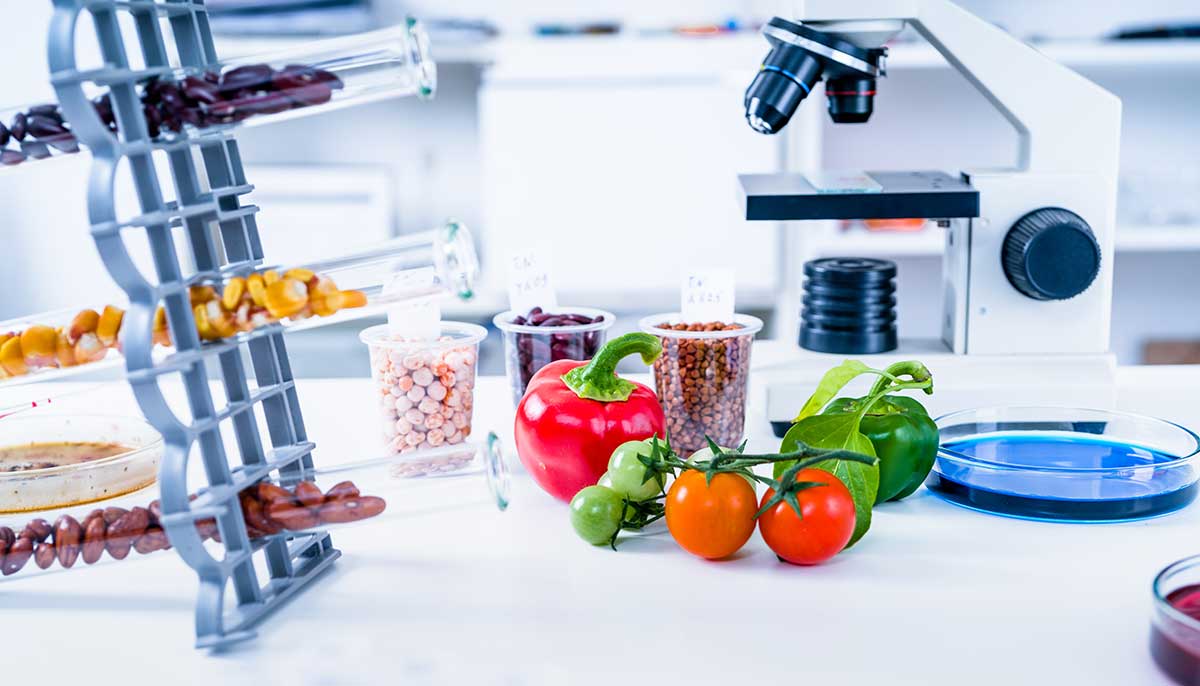
In today’s fast-paced world, technology is reshaping every aspect of our lives, including how we eat and manage our health. The integration of smart technology into nutrition and eating habits is transforming the way consumers interact with food, offering unprecedented levels of personalization and insight. From wearable devices that track health metrics to AI-driven apps that provide dietary recommendations, technology is leading a revolution in how we approach nutrition.
The Rise of Wearable Technology
Wearable technology has become a cornerstone in the quest for better health and nutrition. Devices like fitness trackers and smartwatches are equipped with sensors that monitor various health metrics such as heart rate, physical activity, and even sleep patterns. These devices are not just about tracking; they provide actionable insights that help users make informed decisions about their diet and lifestyle. According to a report by the World Health Organization, maintaining a balanced diet is crucial for health, and technology is making it easier for individuals to achieve this balance by providing real-time feedback on their dietary choices.
One of the most significant advancements in wearable technology is the development of continuous glucose monitors (CGMs). These devices allow users to track their blood sugar levels in real-time, providing insights into how different foods affect their glucose levels. This technology is particularly beneficial for individuals with diabetes, enabling them to manage their condition more effectively. As noted in a study published by the National Institutes of Health, AI-driven dietary assessments are becoming increasingly sophisticated, offering personalized nutrition advice based on individual health data.
AI and Machine Learning in Nutrition
Artificial intelligence (AI) and machine learning are playing pivotal roles in the evolution of personalized nutrition. These technologies analyze vast amounts of data to provide tailored dietary recommendations that cater to individual needs and preferences. Apps like SnapCalorie use AI to estimate the calorie content of meals from photographs, making it easier for users to track their intake without manual logging. This innovation is part of a broader trend towards hyper-personalization in the food industry, where consumers expect products and services tailored to their unique health profiles.
AI is also being used to develop personalized meal plans based on genetic information. The concept of a “DNA diet” is gaining traction, with companies offering genetic testing to create nutrition plans that align with an individual’s genetic makeup. This approach is supported by research from the Australian Institute of Food Science and Technology, which highlights the potential of genetic data to inform dietary choices and improve health outcomes.
Smart Shopping and Meal Planning
Technology is not only changing how we eat but also how we shop for food. QR codes and mobile apps are becoming common tools for consumers to access nutritional information and personalized recommendations while shopping. These technologies enable shoppers to make informed decisions about the products they purchase, aligning their choices with their health goals. A report by Nutrition Australia emphasizes the importance of informed food choices in promoting health and well-being, a goal that technology is helping to achieve by providing consumers with easy access to detailed product information.
Meal planning has also been revolutionized by technology. Online services offer personalized meal kits that cater to specific dietary needs, delivered directly to consumers’ doors. These services use data-driven insights to create meals that align with users’ nutritional goals, making healthy eating more accessible and convenient. The rise of these services reflects a broader shift towards digital dining, where technology enhances the culinary experience both at home and in restaurants.
The Impact of Social Media and Digital Dining
Social media platforms are playing a crucial role in shaping eating habits and food trends. Platforms like Instagram and TikTok are not just sources of inspiration but also tools for discovering new recipes and dietary approaches. Consumers are increasingly turning to social media for cooking tips and nutritional advice, with influencers and brands sharing content that resonates with their audiences. This trend is part of a larger movement towards digital dining, where technology enhances the food experience by providing new ways to engage with food and nutrition.
Virtual reality (VR) and augmented reality (AR) are also making their way into the dining experience. Restaurants are using these technologies to create immersive dining experiences that engage customers in new and exciting ways. For example, VR can transport diners to different culinary landscapes, while AR can provide interactive menus that offer detailed information about each dish. These innovations are transforming the dining experience, making it more interactive and personalized.
Challenges and Opportunities
While the integration of technology into nutrition and eating habits offers numerous benefits, it also presents challenges. Data privacy is a significant concern, as consumers must share personal information to access personalized services. Ensuring the security of this data is crucial to maintaining consumer trust. Additionally, the rapid pace of technological advancement can create disparities in access, with some populations benefiting more than others from these innovations.
Despite these challenges, the opportunities presented by smart technology in nutrition are vast. As technology continues to evolve, it has the potential to make healthy eating more accessible, personalized, and enjoyable. By leveraging data and AI, consumers can gain deeper insights into their health and make informed decisions that enhance their well-being.
Conclusion
The integration of smart technology into nutrition and eating habits is reshaping the food landscape, offering consumers unprecedented levels of personalization and insight. From wearable devices that track health metrics to AI-driven apps that provide dietary recommendations, technology is leading a revolution in how we approach nutrition. As these innovations continue to evolve, they hold the promise of making healthy eating more accessible and personalized, ultimately enhancing the quality of life for individuals around the world.
Healthy Eating
Pioneering Healthy Ingredients Through Traditional Fermentation
Published
10 months agoon
June 2, 2024By
Staff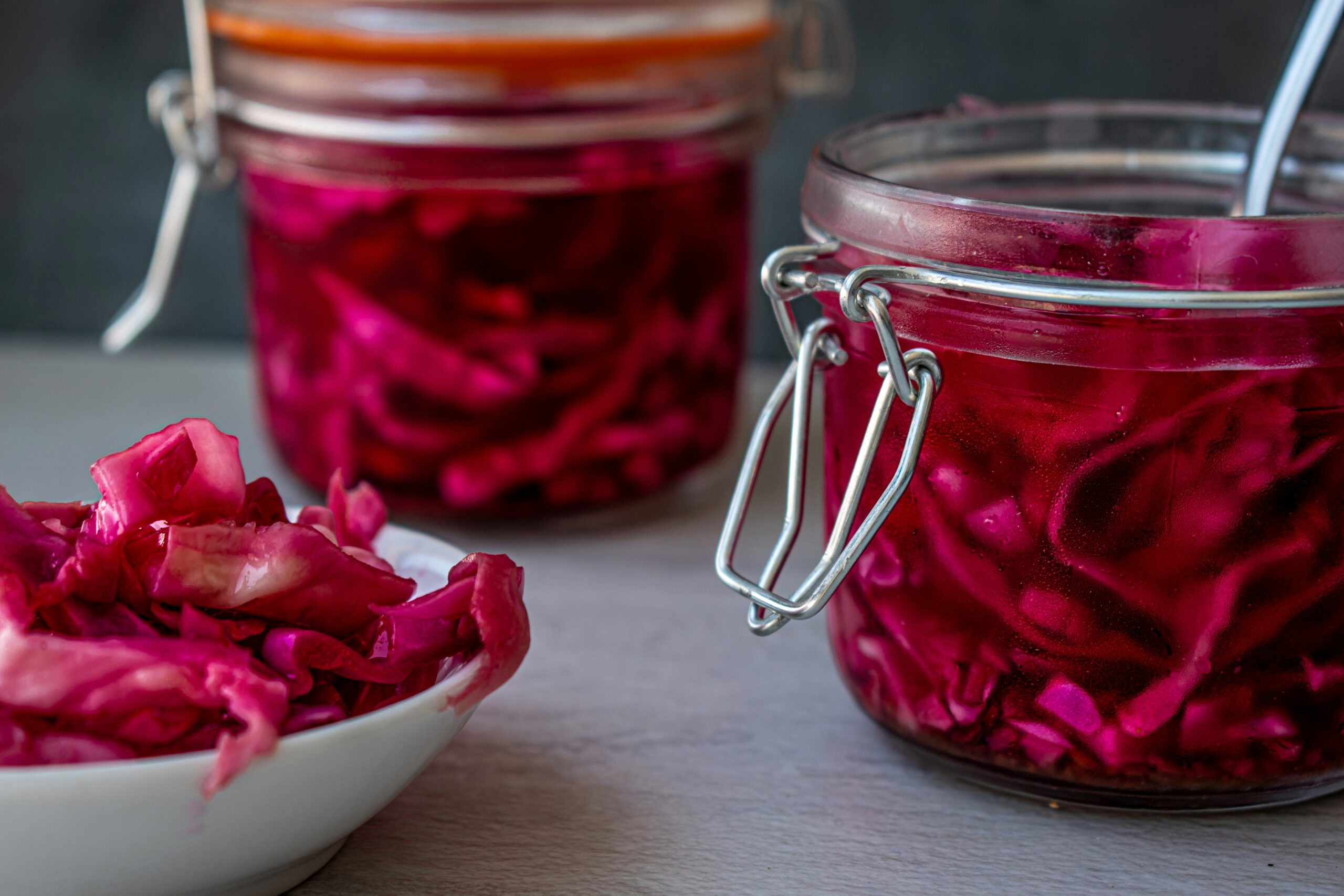
In the constantly evolving landscape of food technology, the integration of traditional practices with modern innovations is creating a revolution in healthy food ingredients. Traditional fermentation, a technique that has been around for millennia, is now being reimagined and applied in novel ways to produce healthier, more sustainable food products. This convergence of old and new methodologies is not only enhancing the nutritional profile of food but also addressing contemporary health and environmental concerns.
Traditional Fermentation: A Timeless Technique
Fermentation, a process where microorganisms like bacteria, yeast, and molds convert organic compounds—primarily carbohydrates—into alcohol or acids, has been used for centuries to create a variety of foods and beverages. From the tangy depth of soy sauce and the zesty punch of kimchi to the smooth texture of yogurt, fermentation has played a crucial role in culinary traditions across the globe.
Recently, scientists and food technologists are rediscovering the potential of fermentation to produce not just delicious, but also nutritionally superior food ingredients. Traditional fermentation methods are being leveraged to enhance the health benefits of foods, making them more bioavailable and easier to digest. For instance, the production of erythritol, a sugar alcohol used as a low-calorie sweetener, relies heavily on fermentation. Unlike artificial sweeteners, erythritol does not spike blood sugar levels, making it a preferred choice for people managing diabetes and those looking to reduce their sugar intake (IFT).
The Health Benefits of Fermented Foods
Fermented foods are celebrated not just for their unique flavors but also for their health benefits. These benefits are primarily due to the presence of probiotics, live bacteria that are good for the digestive system. Probiotics are known to improve gut health, enhance immune function, and even boost mental health. According to the National Institutes of Health, probiotics can help prevent and treat diarrhea, irritable bowel syndrome (IBS), and some infections.
Furthermore, the fermentation process can increase the bioavailability of nutrients. For example, the fermentation of soybeans to make tempeh or miso increases the availability of vitamins and minerals, making these nutrients easier for the body to absorb. This process also reduces the presence of antinutrients—substances that can interfere with the absorption of nutrients—thereby enhancing the overall nutritional value of the food (Harvard T.H. Chan School of Public Health).
Innovative Applications and Future Directions
The reapplication of fermentation in modern food production is paving the way for a new generation of healthy food ingredients. For instance, companies are now using precision fermentation, a technique that involves the genetic modification of microorganisms to produce specific compounds. This method is being used to create proteins that are identical to those found in animal products, but without the associated environmental footprint.
One notable example is the production of lab-grown dairy proteins. By using genetically engineered yeast to ferment sugars, companies can produce casein and whey proteins, which are the primary proteins found in milk. These proteins can then be used to make cheese, yogurt, and other dairy products that are virtually indistinguishable from their traditional counterparts in taste and texture, but without the need for animal farming. This not only offers a sustainable alternative to traditional dairy farming but also provides options for people with lactose intolerance or those following a vegan diet (Good Food Institute).
In addition to dairy, fermentation is also being used to produce plant-based meat alternatives. By fermenting plant proteins, companies can create products that mimic the taste and texture of meat. This innovation is particularly significant as it provides a sustainable and ethical alternative to meat, addressing concerns related to animal welfare, environmental impact, and health.
Environmental and Economic Impact
The environmental benefits of fermentation-based food production are substantial. Traditional animal farming is a significant contributor to greenhouse gas emissions, deforestation, and water use. In contrast, fermentation requires fewer resources and generates less waste. Precision fermentation, in particular, has the potential to dramatically reduce the environmental footprint of food production.
Economically, the fermentation industry is poised for significant growth. According to a report by the Food and Agriculture Organization, the global market for fermented foods is expected to grow substantially in the coming years. This growth is driven by increasing consumer awareness of the health benefits of fermented foods, as well as a growing demand for sustainable and ethical food products.
The scalability of fermentation processes also makes them economically viable. Traditional fermentation methods can be adapted and scaled up using modern biotechnological tools, allowing for mass production of high-quality food ingredients. This scalability ensures that fermented products can meet the growing global demand for healthy and sustainable food.
Challenges and Considerations
Despite the numerous benefits, there are challenges associated with the widespread adoption of fermentation technology in food production. One significant challenge is the regulatory landscape. Fermented foods and ingredients, especially those produced using genetically modified organisms (GMOs), are subject to stringent regulations. Navigating these regulations can be complex and time-consuming.
There is also the challenge of consumer perception. While awareness of the benefits of fermented foods is growing, some consumers remain skeptical of foods produced using biotechnology. Education and transparent communication about the safety and benefits of these products are crucial for gaining consumer trust.
Furthermore, there is the issue of scaling up production. While fermentation is a relatively efficient process, it requires precise control of environmental conditions to ensure the desired outcomes. This can be technically challenging and requires significant investment in infrastructure and expertise.
Conclusion
The fusion of traditional fermentation techniques with modern biotechnology is revolutionizing the production of healthy food ingredients. By enhancing the nutritional profile of foods, improving sustainability, and offering ethical alternatives to animal products, fermentation technology holds the promise of a healthier and more sustainable future.
As this field continues to evolve, it will be essential for stakeholders—including scientists, food producers, regulators, and consumers—to work together to overcome challenges and maximize the benefits. The future of food is being shaped by these innovations, and the potential impact on our health and the environment is profound.
For more detailed insights into the role of fermentation in modern food production, you can read the full article on the Institute of Food Technologists’ website.
Healthy Eating
Vegan Food News of the Week: Innovations and Delights
Published
1 year agoon
March 28, 2024By
Staff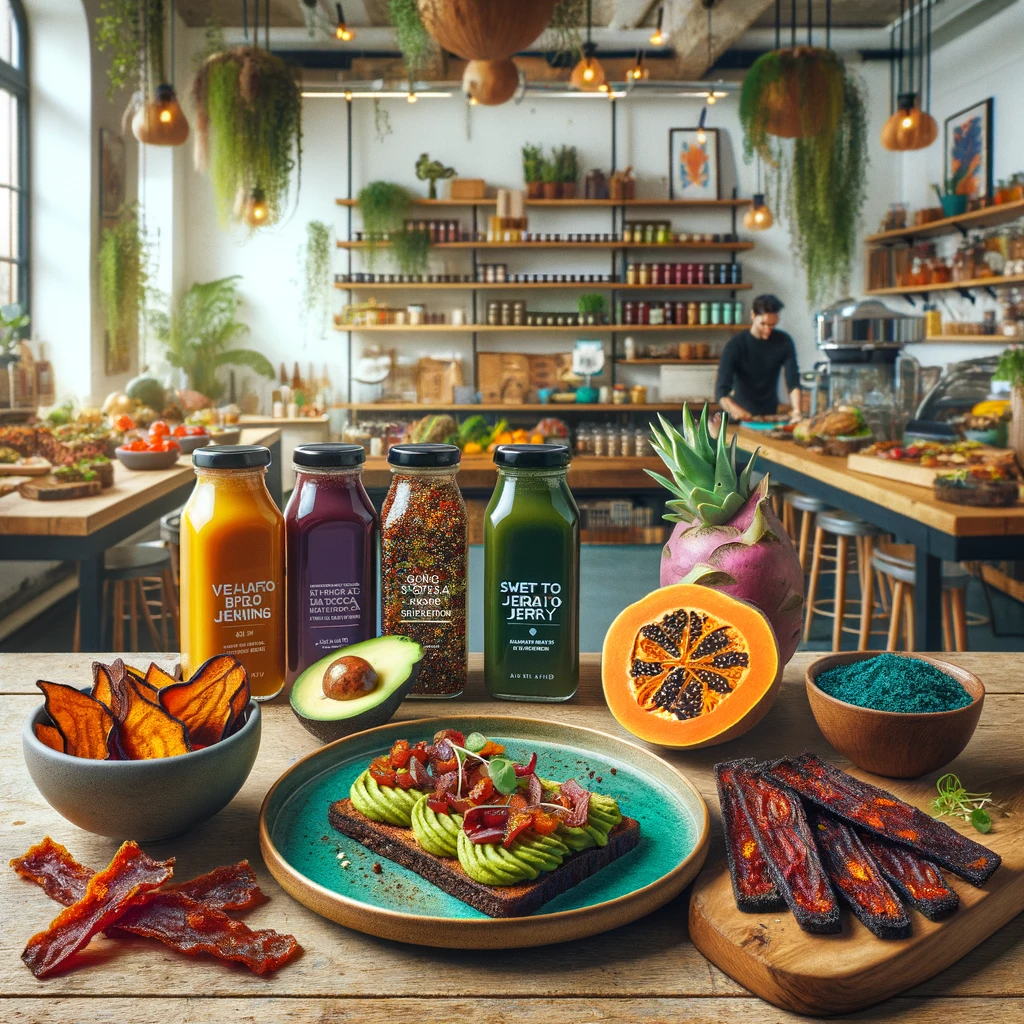
In the ever-evolving world of vegan cuisine, this week has brought a plethora of delightful updates and innovations. From the world’s first plant-based soup dumplings to celebrity-endorsed juices and advancements in vegan honey, the vegan food industry continues to surprise and inspire with its creativity and commitment to sustainability. Here’s a rundown of some of the most exciting developments.
Soup Dumplings Get a Vegan Makeover
One of the most notable innovations this week is the introduction of the world’s first plant-based soup dumplings by dumpling brand MìLà. Traditionally, soup dumplings, or xiaolongbao, rely on gelatin to keep the broth gelatinous until steamed. MìLà’s new Vegetarian Soup Dumplings, which are entirely vegan, utilize a patent-pending vegan gelatin and jackfruit to mimic the traditional texture and flavor. This development comes after two years of rigorous testing and is a significant step forward in making popular cuisines accessible to the vegan community.
Avocado Toast Seasoning Revolution
European brand Just Spices has introduced a novel seasoning blend designed specifically for avocado toast. This blend, which includes tomato flakes, chilies, black sesame, and tellicherry pepper, promises to elevate the simple avocado toast to new culinary heights. Just Spices’ expansion into the US market is supported by The Kraft Heinz Company, highlighting a growing trend of traditional food giants exploring the plant-based space.
Vegan Jerky from Theo’s Plant Based
In the snack category, Theo’s Plant Based has launched an innovative Sweet Potato Jerky. This snack combines the natural sweetness of sweet potatoes with a variety of flavors, including Garlic Herb, Maple Dijon, Miso Nori, and Korean BBQ. Theo’s commitment to using the whole vegetable and sourcing from regenerative and organic farms emphasizes the sustainability aspect of vegan snacking.
Planta Burger Expands Its Reach
Planta, a vegan restaurant chain known for its upscale plant-based fare, is expanding its popular Planta Burger concept through four ghost kitchens across Florida and New York City. The concept, which started in Toronto, offers a variety of plant-based burgers, sides, shakes, and treats, catering to the growing demand for high-quality vegan fast food.
Innovations in Vegan Dairy and Honey
The dairy and honey alternatives market is also seeing exciting developments. Bored Cow has launched the first vegan drinkable yogurt line made with animal-free whey, available in Vanilla, Strawberry, and Passionfruit Mango flavors. Meanwhile, MeliBio is revolutionizing the honey industry with its bee-free Spicy Habanero Hot Honey, offering a vegan alternative to this popular condiment.
Erewhon and Kourtney Kardashian Team Up for Lemme Juice
In collaboration with wellness brand Lemme, owned by Kourtney Kardashian, Los Angeles grocery store Erewhon has launched a new plant-based juice. Priced at $17, this luxurious blend includes ingredients like coconut and almond milk, pitaya, sea moss, blue spirulina, lavender, maple syrup, and custom probiotics, setting a new standard for health-conscious beverages.
Sweet Treats from Nature’s Bakery
Finally, Nature’s Bakery is expanding its vegan brownie line with a new Salted Caramel flavor. Made with whole grains, dates, and vegan chocolate, this new addition promises a delicious and wholesome snacking option.
These updates from the vegan food industry underscore the sector’s continuous innovation and growth. As consumer interest in plant-based options rises, companies are responding with creative solutions that not only cater to vegan and vegetarian diets but also appeal to a broader audience looking for sustainable, healthy food choices. With each new development, the vegan food industry moves closer to offering a plant-based alternative for every palate and preference.
For more detailed insights and developments in the vegan food industry, check out the full article on VegNews.
The vegan food scene is more vibrant and innovative than ever, offering exciting options for every meal and craving. Whether you’re a long-time vegan or just curious about plant-based eating, these developments are sure to inspire and delight.

Make Thanksgiving 2024 a Breeze

Reviving Your Kitchen’s Wooden Treasures: The Art of Making Spoon Butter

Food & Wine Magazine Unveils 2024 “Best New Chefs”: A Celebration of Culinary Innovation and Diversity

Kitchen Cabinet Organization Tips and Ideas this 2020

Sending shockwaves to Measure the Ripeness of Fruit

New York’s Eisenberg Sandwich Shop is Closed Indefinitely
Trending
-

 Tips & Advice5 years ago
Tips & Advice5 years agoKitchen Cabinet Organization Tips and Ideas this 2020
-

 News & Stories4 years ago
News & Stories4 years agoSending shockwaves to Measure the Ripeness of Fruit
-

 Restaurants4 years ago
Restaurants4 years agoNew York’s Eisenberg Sandwich Shop is Closed Indefinitely
-

 Recipes4 years ago
Recipes4 years agoCrazy and Effortless Delicious Breakfast: Huevos Al Nido
-
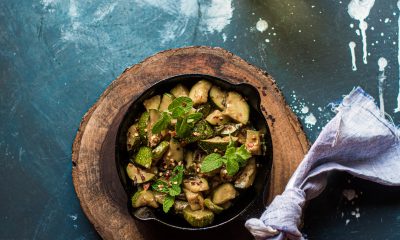
 Kitchen Gadgets4 years ago
Kitchen Gadgets4 years ago9 AMAZING FEATURES OF CAST IRON SKILLET PANS
-

 Chefs4 years ago
Chefs4 years agoPhat Eatery Chef-Owner Launches Ghost Concept: Phat Kitchen
-

 Kitchen Gadgets4 years ago
Kitchen Gadgets4 years agoWhy Ove Gloves are the Best Oven Mitts
-

 Kitchen Gadgets4 years ago
Kitchen Gadgets4 years agoHow to Care for Stainless Steel Cookware
